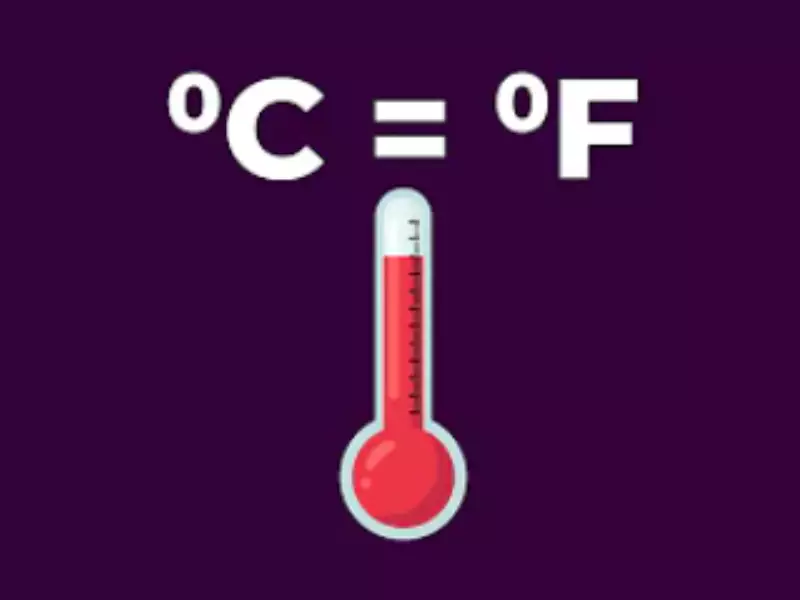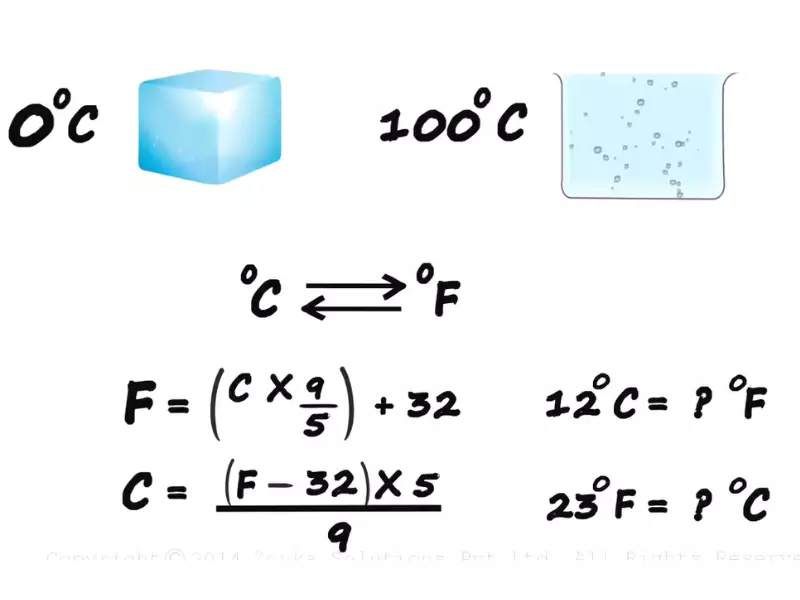It’s no surprise that people across the world use different temperature scales to measure the temperature of their environment. In this blog, we will discuss the relation between the two most widely used temperature scales, Degree Celsius and Fahrenheit.
We will explore the history of these scales, the mathematical conversions between them, and how they are used today.
History of the development of the celsius and fahrenheit temperature scales
The relationship between Celsius and Fahrenheit temperature scales has a long and interesting history. Developed in the 18th century by Swedish astronomer Anders Celsius and German physicist Daniel Gabriel Fahrenheit, the two scales have become the most widely used temperature scales in the world.

The Celsius scale is based on 0°C being the freezing point of water and 100°C being the boiling point of water, with the two points being divided into 100 increments. On the Fahrenheit scale, the freezing point of water is 32°F and the boiling point is 212°F. While both scales measure the same temperature, they use different increments.
The difference between Celsius and Fahrenheit is that one degree Celsius is equal to 8 degrees Fahrenheit. This means that an increase in one degree Celsius is equivalent to an increase of
This means that an increase in one degree Celsius is equivalent to an increase of 8 degrees Fahrenheit. It is important to note that the two scales are not directly proportional, so the conversion between them is not always straightforward.
Explaining the difference between celsius and fahrenheit
Temperature is an important measure when it comes to understanding our environment. But did you know that there are two distinct temperature scales: Celsius and Fahrenheit? Both are widely used for measuring temperature, but what sets them apart?
Both are widely used for measuring temperature, but what sets them apart? In this article, we will explain the difference between Celsius and Fahrenheit in terms of their scales, the relationship between them and the history behind them. The Celsius scale, also known as the centigrade scale, is based on the freezing point of water (0°C) and the boiling point of water (100°C).
On the other hand, the Fahrenheit scale is based on the freezing point of a brine solution (32°F) and the boiling point of water (212°F). The two scales are related to each other by the formula: F = (9/5)C + 3
For example, 20°C is equal to 68°F. The Celsius scale is more commonly used in scientific applications, while the Fahrenheit scale is used in everyday life, such as measuring the temperature outside or in a building.
The history of the two temperature scales is interesting as well. Celsius was created by the Swedish astronomer Anders Celsius in 174 He based his scale on the freezing and boiling points of water. However, it was the German physicist Daniel Gabriel Fahrenheit who proposed the Fahrenheit scale in 172 To sum it up, Celsius and Fahrenheit are two different temperature scales used to measure temperature. The Celsius scale is two-thirds of the Fahrenheit scale and is more commonly used in scientific applications. There is an interesting history behind the two scales, with Celsius being created by the Swedish astronomer Anders Celsius in 1742 and Fahrenheit proposed by the German physicist Daniel Gabriel Fahrenheit in 172

How to convert between celsius and fahrenheit
Converting between Celsius and Fahrenheit doesn’t have to be a difficult task! All you need to remember is the simple formula: Celsius and Fahrenheit are related by the equation °F = (9/5) × °C + 3
Conversely, if you take the temperature in Fahrenheit and subtract 32, and then multiply by 5/9, you will get the temperature in Celsius. With this simple equation, you can easily convert between Celsius and Fahrenheit and ensure your temperature readings are accurate!
Benefits of knowing the difference between celsius and fahrenheit
Understanding the relation between Celsius and Fahrenheit is an essential part of having a firm grasp of temperature and how it works. Both Celsius and Fahrenheit are two of the most commonly used temperature scales, and it’s important to understand the difference between them.
Celsius is the most widely used temperature scale today, and it’s based on the freezing and boiling points of water. When water freezes, it reaches 0°C (Celsius) and when it boils, it reaches 100°C.
The Fahrenheit scale, on the other hand, is based on the freezing and boiling points of a mixture of ice and water. The freezing point of this mixture is 32°F (Fahrenheit) and the boiling point is 212°F.
Knowing the difference between Celsius and Fahrenheit is important because it can help you to better understand temperature and how it works. For example, if you know that the boiling point of water is 100°C, then you know that it’s 212°F.
This can be useful when you’re cooking, so that you can make sure the food is cooked to the right temperature. Additionally, if you know what temperature it is in Celsius, you can easily convert it to Fahrenheit by dividing the number by This can be especially helpful when you’re traveling in different countries, as some countries use Celsius and some use Fahrenheit. Overall, understanding the relation between Celsius and Fahrenheit is a useful skill to have. It can help you to better understand temperature and how it works, and it can also help you to travel more easily.
Common mistakes when converting between celsius and fahrenheit
When converting between Celsius and Fahrenheit, it can be easy to make a mistake. This is because the two scales have different base temperatures—Celsius has a base of 0° and Fahrenheit has a base of 32°.
To convert from Fahrenheit to Celsius, you must subtract 32 from the Fahrenheit temperature and then multiply by 5/ Knowing the relation between these two temperature scales can help avoid any conversion errors!
Conclusion
In conclusion, the relation between degree Celsius and Fahrenheit is one of the most important and useful relations in the world of temperature. It is a linear relationship, where a 1° Celsius increase is equal to a
8° Fahrenheit increase. This relation is often used to easily convert temperatures from one scale to another. Knowing how to use this relation can be very useful, especially in science and engineering.
